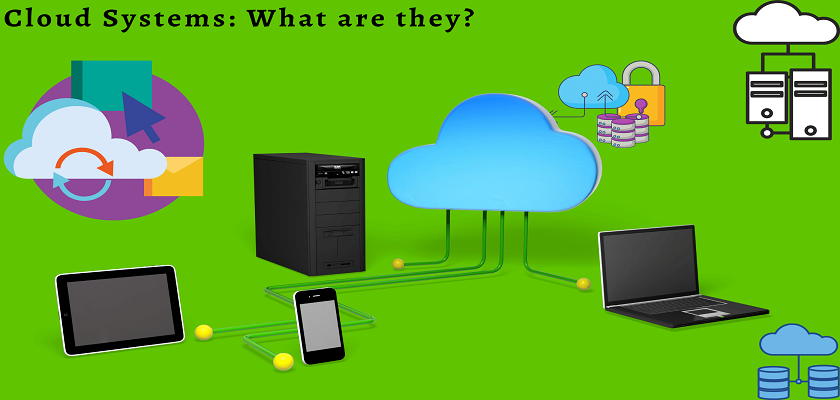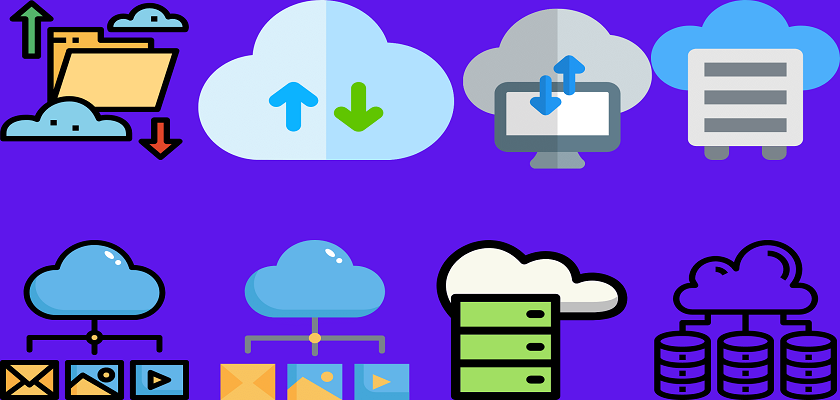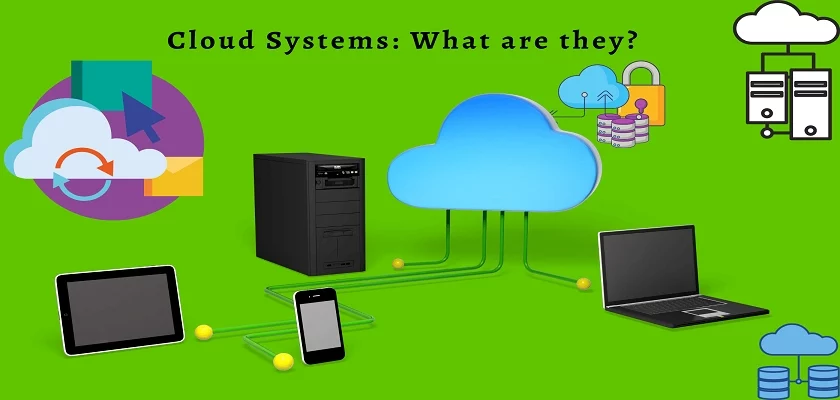
The word “cloud systems” is still a buzzword today even though it was introduced several years ago. Since the innovation of cloud systems, they have spiraled into multiple industries. Also, cloud computing has proven its effectiveness in supporting businesses and leading them to great success. Even though the term “cloud systems” may still be vague, it has become inevitable to adopt for those who want to achieve more success and prosperity in the present digital era.
Cloud Systems: What do you need to know about it?
When it comes to cloud systems and other terms like cloud storage systems, cloud infrastructure, file sharing, and more, many are not knowledgeable about them. This article will cover the basics and advanced resources of cloud systems, linked services or solutions with cloud technology, so that a better understanding can be delivered.
So, without any delay, we will start with the definition of cloud systems below:
What are Cloud Systems?
Cloud systems, also known as cloud computing technology, are a combination of hardware, infrastructure, and software that help in enabling the delivery of cloud computing services remotely.
In simple words, cloud systems are all about delivering computing services ranging from storage, software, networking, analytics, and intelligence with remotely networked Servers to provide better functionality, economies of scale, and flexible resources.
Typically, users have to pay for cloud services. This will ultimately help them lower their operating costs while running infrastructure more efficiently. Most importantly, users can also scale their business when needed.
Overall, cloud computing is a big shift from traditional business methods to complete IT resources available to the user without his or her direct management. There are various reasons that are compelling businesses to consider cloud systems over traditional business models.
Key Components of Cloud Systems
At the core of cloud systems technology, two key components are present. These key components of cloud systems include virtualization and Service-Oriented Architecture (SOA). Let’s look at a brief description of these two components to know more in this regard.
(1) Cloud Virtualization in Cloud Systems
Cloud virtualization is an essential aspect of cloud systems that facilitates the quick delivery of services related to cloud systems. In this system, the implementation of virtual computing resources mimics physical computing resources’ functionality. In essence, cloud virtualization serves as an effective load-balancing management tool. It also allows flexibility for the delivery of computing services and swift adjustments on-demand.
Cloud virtualization also provides organizations with an effective tool to promote the highest possible levels of scalability, reliability, and availability. This is so as cloud systems make it possible for an organization to have access from anywhere and anytime to meet its IT needs.
So overall, cloud virtualization is a critical component of cloud systems for fail-over-support and disaster recovery.
(2) Service Oriented Architecture (SOA) in Cloud Systems
Service Oriented Architecture, also known as SOA, is a cloud systems element that allows organizations to use cloud-based services with modifiable features on-demand. This is so as the needs and requirements of businesses regarding IT resources keep changing over time. SOA also allows independent Servers to communicate in real-time with each other over the internet. This provides the flexibility necessary for configuring service delivery rapidly for any cloud computing offer.
This component also places the responsibility of development, maintenance, and deployment of web components on the service provider. Consequently, this will allow the consumers of web services to access different services without additional expense.
Overall, SOA is a powerful component as it ensures central distribution and reuse of components. It will surely drive the software development and deployment costs down significantly.
Benefits of Cloud Systems
When it comes to using cloud computing solutions, numerous benefits come along with these services. Here are some common benefits that are compelling organizations to turn to cloud solutions.
(1) Reduced costs
With cloud computing services, you can simply eliminate the expense of buying hardware and managing IT infrastructure. Overall, it reduces your costs of running operations drastically. With this, you can enjoy fast and efficient cloud computing services that are very affordable.
(2) Enhanced scalability
One of the best benefits of cloud systems is the ability to scale cloud computing services dramatically. This means an organization can get the right number of resources at the right time without any hassle. These resources include cloud storage, computing power, bandwidth, etc.
(3) Improved speed
Cloud computing services are available on-demand and this can offer businesses enhanced flexibility and speed.
(4) Productivity
For on-premises servers, a lot of hassle is sure. It includes tracking and stacking, software patching, hardware setup, and various other time-consuming tasks. However, cloud systems can remove the need for all these tasks. As a result, IT teams will have more time to focus on their core business aspects. Ultimately, you can experience improved productivity of the overall team, due to which achieving the organization’s goals will become quicker.
(5) Performance
The biggest advantage of cloud systems is performance. This is because services are running in secure data centers worldwide. Also, upgrading to the latest, fast, and most efficient generation of computing hardware is performed regularly.
Consequently, it can offer multiple benefits as compared to a single corporate data center. These benefits include greater economies of scale and reduced network latency.
(6) Security
Most cloud service providers have set a broad set of technologies, policies, and controls to protect data, infrastructure, and apps from potential threats. This helps strengthen the security confidence of consumers overall.
(7) Reliability
Cloud systems have made it easier to carry out data backups, ensure business continuity, and efficient disaster recovery. Even more, managing these operations has also become less expensive due to cloud systems as this is possible because data has been mirrored on multiple sites on the network of cloud providers. So overall, the reliability of systems is greatly enhanced with cloud systems.
Types of Cloud Systems

Not all cloud systems are the same. Similarly, not a single type of cloud computing solution can work great for every business. Therefore, multiple cloud computing services, modes, and types have evolved. Also, getting the right solution has become easier for organizations.
When getting cloud systems solutions, it is necessary to determine the type of services needed and the cloud computing architecture where the required services will be implemented.
Commonly, there are three ways to deploy cloud services. You can get a brief overview of all three ways of cloud services deployment below to know more.
So, here we go:
(1) Private Cloud
Private cloud computing resources are used by single businesses or organizations exclusively in cloud systems deployment. It may be located in the data center of the organization physically or some organizations may prefer to pay a third party to host their private cloud.
(2) Public Cloud
In a public cloud deployment, a third party usually owns and operates a public cloud. The third party then delivers their computing resources such as storage and servers via the internet. With public cloud systems, the service provider owns and manages the software, hardware, and all supporting infrastructure. While users can access and manage these services using a web browser.
(3) Hybrid cloud
Hybrid cloud combines private and public clouds, bound by the technology that allows the sharing of data and apps between them. By allowing the apps and data to move between private and public clouds, this cloud systems implementation can offer you enhanced flexibility. Consequently, you can have better deployment options. Also, it can help you optimize your prior infrastructure, compliance, and security more effectively.
Services in Cloud Systems
Most cloud computing providers offer a wide range of cloud computing services. Knowing what these cloud systems services offer, and understanding how this works can make it easy to acquire your required cloud systems services. As a result, accomplishing business goals will become easier with the right cloud services in place.
So, let’s have an overview of popular cloud computing services below:
Cloud Storage Systems
These storage systems are a model that store data via a cloud computing provider who operates and manages data storage as a service and is commonly delivered on-demand with in-time costs and capacity. This will keep you from buying and managing your own storage infrastructure.
With cloud storage systems, you can experience agility, durability, global scale, with data access anywhere, anytime.
Consumers usually purchase cloud storage services from a third-party vendor. The vendor operates and owns data storage and delivers it with a pay-as-you-go model via the internet. This cloud storage vendor will also manage security, durability, and capacity for ensured data accessibility from anywhere in the world.
Applications can access cloud storage via API’s or conventional storage protocols. Even more, some vendors also offer additional services to help collect, secure, manage, and analyze data at a large scale.
Overall, cloud storage systems can ensure that your organization’s data is secure, safe, and available whenever you need it. Commonly, in cloud storage systems, you have file storage, block storage, and object storage.
Each of these cloud storage types come with its own advantages and use cases. So, you can simply choose the type of cloud storage system based on your preferences and organizational needs.
Cloud Infrastructure
Cloud infrastructure is a key term to describe components essential for cloud computing. These components include software, hardware, and abstracted resources such as network and storage. Simply, you can think of cloud infrastructure as a set of tools required to build a cloud.
Generally, cloud infrastructure is a combination of three parts that collaborate to create cloud services. These include:
(1) Networking
Networking is an essential component of cloud infrastructure to transfer data between cloud systems and externally. This part of cloud infrastructure relies on network devices such as switches and routers.
(2) Computing
This part of cloud infrastructure is based on the implementation of Server racks for efficient delivery of cloud services.
(3) Storage
Effective cloud infrastructure requires significant storage. Therefore, it uses a combination of flash storage and high-efficiency drives.
Cloud Applications
Basically, cloud applications are software that users access through the internet primarily, and are deployed within a cloud environment instead of being hosted on a local machine or Server.
Furthermore, a cloud application is any software that will run its data storage and processing logic between two systems. These systems are Server-side and Client-side. Users interact with cloud applications through API or a web browser. some of these are:
Software as a Service (SaaS)
Software as a Service delivers a web application, its underlying platforms, and IT infrastructure to users.
Infrastructure as a Service (IaaS)
This means the provider manages infrastructure for you via the private or public cloud. You can access this infrastructure via the provided dashboard or an API to manage things like applications, operating systems, and middleware. At the same time, everything else is the responsibility of the provider.
Platform as a Service (PaaS)
PaaS solution gives you a platform to create, manage, and deploy applications without managing the infrastructure and environment essential to run these apps. So, you can easily use PaaS as a foundation to develop new apps without investing time in managing a platform.
Data Protection Solutions
When it comes to data, you can never choose between the availability and security of your data. That’s the reason cloud data protection solutions are in existence.
A Cloud data protection solution is a method of securing the data of an organization in the cloud, wherever it is located or managed.
Cloud data protection solutions are very important. This is because most companies have switched to cloud solutions instead of building and managing their data centers. With effective data protection solutions, organizations can secure their data and apps across multiple environments while maintaining complete visibility in the best possible way.
Cloud Hosting
Cloud hosting is a service that makes your websites and applications accessible using cloud resources. These services are based on a network of virtual and physical servers connected to host websites and applications.
Cloud hosting can ensure enhanced scalability and flexibility. Key features of cloud hosting services include:
(1) Scalability of resources as per users’ needs.
(2) Organizations have to pay for cloud hosting resources they are using only.
(3) Cloud hosting can support different databases.
(4) Cloud hosting provides manageability via web portals, mobile apps, and APIs.
File Hosting
File hosting is an effective and efficient internet service meant to host users’ files exclusively. This means only user data will be stored on the internet and related services at the backend. However, the stored data may be from one or more users who can access this data using protocols like HTTPS and FTP.
Even more, a cloud file hosting service can be an efficient option to back up your files to keep them safe from accidental loss. Additionally, you can access your hosted files quickly under any circumstances and from anywhere in the world at a time of need.
File Sharing
File sharing is basically a method of sharing data with someone over a network. You can share your files with someone from your family, a team member, or a friend away from you.
This practice can allow multiple people to access and use your shared files. Furthermore, most file-sharing applications help restrict actions that can be performed on your shared file. With this, you can provide different levels of file access privileges to them as per the needs of the moment.
Final Thoughts
Beyond data centers, cloud systems have become a revolutionary technology over time. Fortunately, this is true for businesses of any size and type. Cloud systems have become a key component of all application integration and modern ecosystem strategy.
Rather than investing in costly hardware and managing infrastructure, companies prefer to invest in cloud systems. This is because this service offers modern infrastructure, efficient networking, storage, and computing resources.
So, overall, cloud systems and related services are in huge demand due to the massive benefits there-in.

Wow, That’s a nice article.